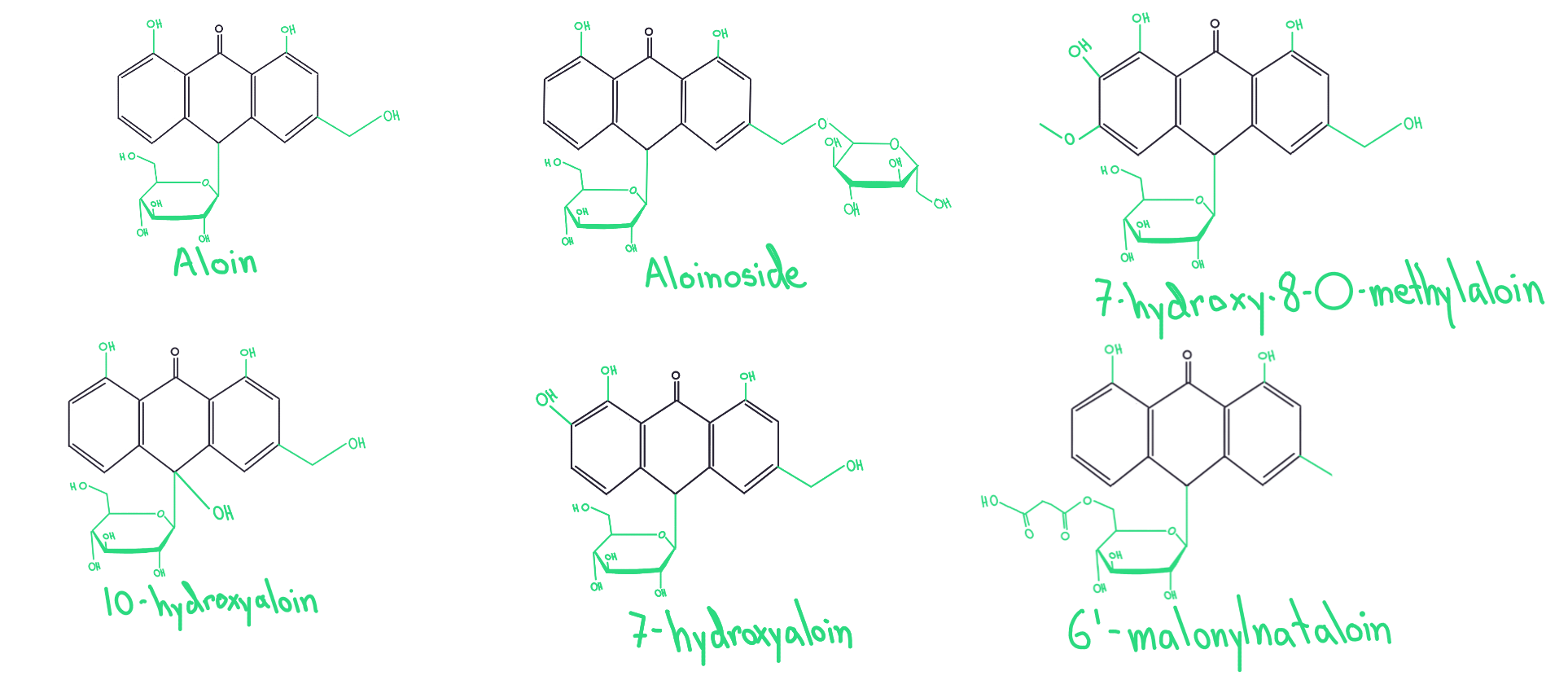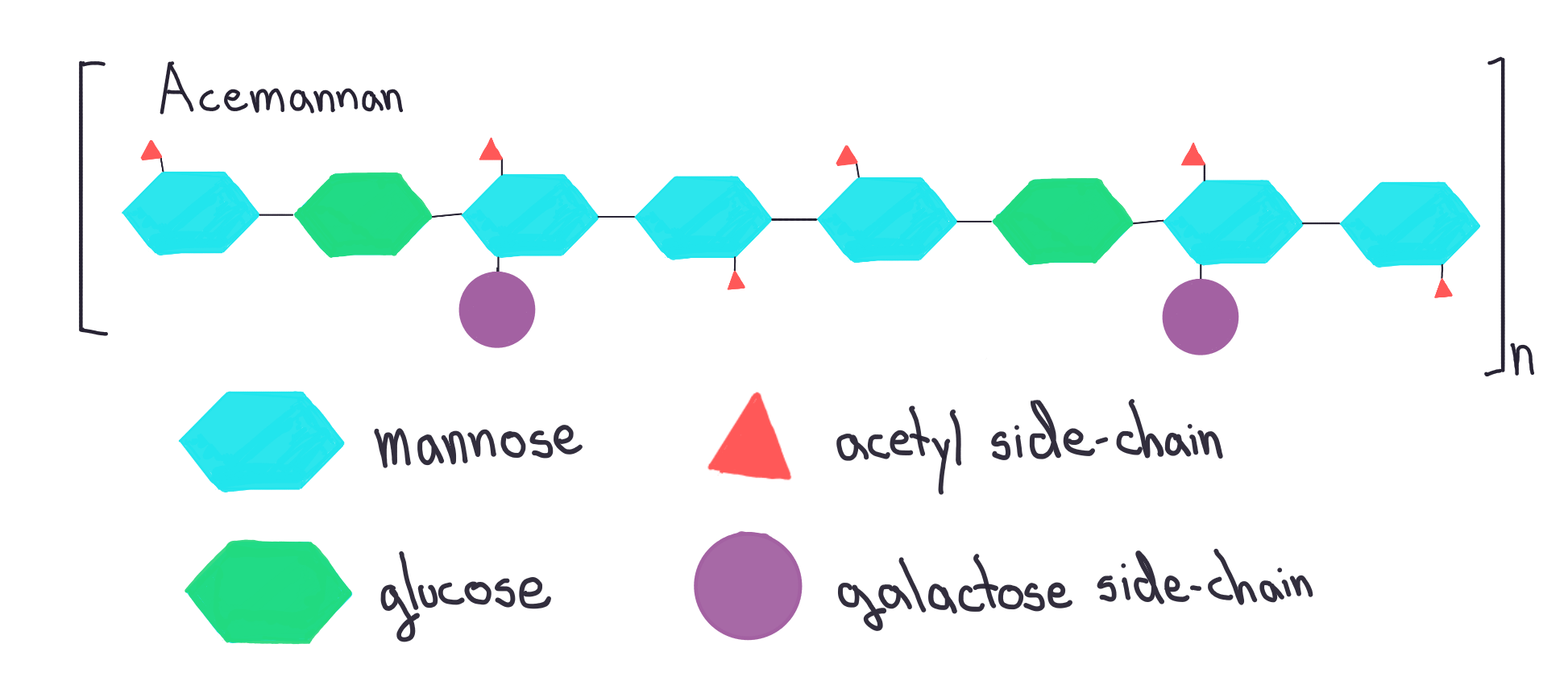Aloe vera! A brief tribute
02 May 2022Have you ever seen a video of Aloe vera being harvested? If you haven’t, I highly recommend you do! You won’t be disappointed. Inside the leaves of this desert succulent is a soothing jelly that humans have used for millennia to treat rashes, sunburns, and wounds. Workers harvest the jelly by slicing off the tough outer epidermal layer of the plant, leaving fully intact triangular sections of gel. It makes for a very satisfying watch.
Humans have been using aloe for millennia. Its first recorded use comes from an ancient Mesopotamian tablet dated 2100 BCE, and aloe is found in traditional medicines from Japan, China, India, West Indies, and South Africa. Nowadays, Aloe vera is one of the most widely used herbal remedies around the world. Botanists describe the desert plant as a perennial succulent xerophyte. Meaning it is a long-lived (perennial) desert plant (xerophyte) adapted to growing in dry conditions by storing water in its thick fleshy tissue (succulent). The triangular fleshy leaves of Aloe Vera contain three layers; a thick outer layer called a rind, a middle latex layer containing bitter yellow sap, and an inner gel layer made up of 90 % water (Surjushe 2008).

The rind plays an essential role in protecting the plants from losing water and facilitating photosynthesis. It’s composed of a cuticle, epidermis layer, palisade cells, and several layers of parenchyma cells. The middle layer contains bundles of tubelike vascular tissue, which acts as the plumbing for the plant. These pipes help transport water from the soil to the leaves and sugars from the leaves to the rest of the plant; surrounding these tubes are bundle sheath cells. Within the vascular bundle are aloin cells, which accumulate large quantities of anthraquinones in their vacuoles producing a yellow sap substance often called “aloe” or “latex”. Anrthoquinones have many interesting medicinal properties, including acting as a potent laxative.

A quick aside: Our friends at the Mayo clinic recommend against ingesting any aloe product, especially the yellow latex sap, as it can cause severe cramps and diarrhea (obviously). So, if you need a laxative, please just go to the drug store and ask your pharmacist.
The tissue in the innermost layer is made of mucilaginous parenchyma, large thin-walled cells filled with water and complex carbohydrates. Much like the mucilage of chia seeds, discussed in an earlier post, these complex carbohydrates, or polysaccharides, help form a hydrophilic matrix that can retain water and allow the aloe plant to survive arid environments with sporadic rainfall. In aloe, the predominant polysaccharide making up this matrix is typically acemannan, which is a long chain of repeating units of the monosaccharide mannose (Hamman 2008). This chain is interspersed with glucose units. The mannose units are all decorated with an extra acetyl group. Galactose side chain decorations can also be found attached to mannose units (Lui et al. 2019).

This acemannan found in Aloe vera is unique to the Aloe genus and, unlike other plant mannans, is relatively soluble. What’s more, humans can’t break down the B-(1-4) glycosidic bond in the acemannan backbone, making it ideal for therapeutic uses because it isn’t broken down before it can take medicinal effect. Studies have shown that acemannan has anti-cancer activity, and neuroprotective benefits. It can even regulate the immune response in mouse cell cultures (Lui et al. 2019). What’s more, acemannan is reported to promote wound healing and bone regeneration and is currently being tested in dental surgeries (Boonyagul et al. 2014).
As I mentioned earlier, Aloe vera is one of the most widely used herbal remedies today. If you’ve ever had a sunburn, you may have relied on the gel on your skin for soothing relief, and soon you even may benefit from the biochemistry of Aloe Vera at the dentist!
Bonus Reading:
Boonyagul, Sani, Wijit Banlunara, Polkit Sangvanich, and Pasutha Thunyakitpisal. “Effect of acemannan, an extracted polysaccharide from Aloe vera, on BMSCs proliferation, differentiation, extracellular matrix synthesis, mineralization, and bone formation in a tooth extraction model.” Odontology102, no. 2 (2014): 310-317.
Hamman, Josias H. “Composition and applications of Aloe vera leaf gel.” Molecules 13, no. 8 (2008): 1599-1616.
Liu, C., Cui, Y., Pi, F., Cheng, Y., Guo, Y. and Qian, H., 2019. Extraction, purification, structural characteristics, biological activities and pharmacological applications of acemannan, a polysaccharide from aloe vera: A review. Molecules, 24(8), p.1554.
Surjushe, Amar, Resham Vasani, and D. G. Saple. “Aloe vera: a short review.” Indian journal of dermatology 53, no. 4 (2008): 163.